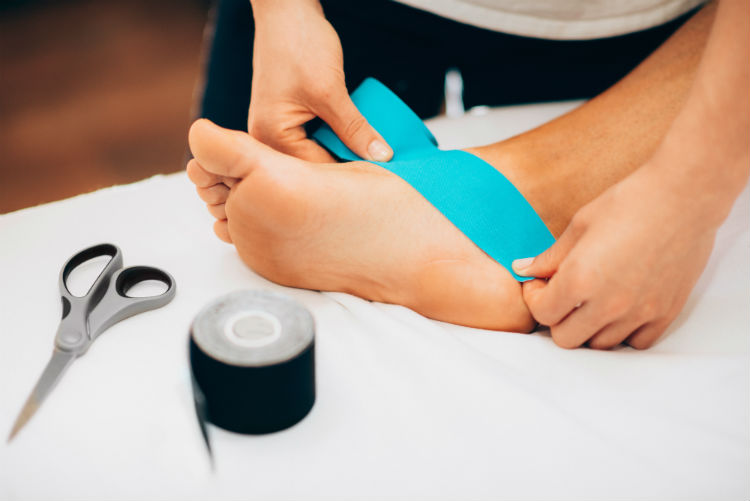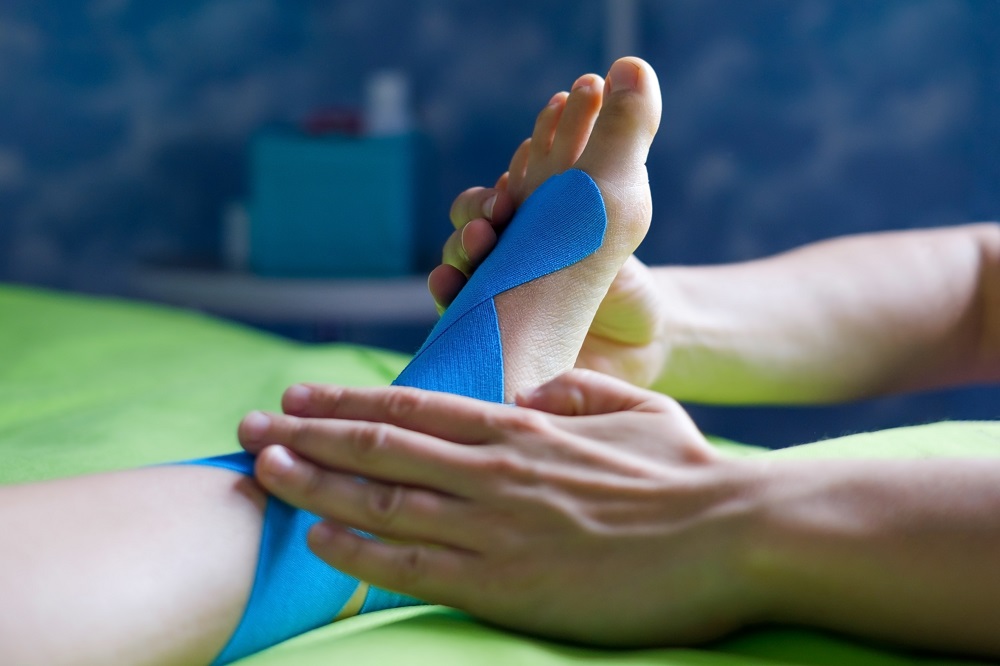When removing the tape, knowing the correct approach is crucial to maintaining skin health and comfort. Begin by gently lifting the edge of the KT tape, ensuring not to tug sharply to avoid skin irritation. Always peel back the tape toward hair growth to minimize discomfort. If the tape is stubborn, don’t force it—patience is key to a pain-free removal process.
Once you’ve started, stretch the tape back over itself rather than pulling away from the skin. This method reduces the stress on the skin and helps prevent irritation. Keep in mind that supporting muscles may have become accustomed to the tape’s presence, so move slowly and carefully during removal to allow your body to adjust to the change.
The Proper Way to Detach Kinesiology Tape
Proper detachment of kinesiology tape starts with a careful approach. Find an edg:e of the tape and pull it back on itself slowly, working at a low angle. By doing so, you minimize the chances of causing any skin irritation or damage. If the tape resists, do not continue to pull harder; there are safer methods to help loosen the adhesive.
As you slowly pull, pay attention to how your skin reacts. If you notice any signs of redness or discomfort, pause and consider using an alternative method, such as soaking or applying oil, to remove the tape. Remember, the goal is to detach the tape without leaving any residue or causing unnecessary stress to your skin.
Soaking Techniques for Easier Removal
Soaking can significantly ease the process of tape removal. Submerging the taped area in warm water helps to loosen the adhesive, allowing you to remove the tape with less force. This method is especially beneficial if the tape has been on for an extended period or if you have sensitive skin prone to irritation.
You can soak the affected area in a bathtub, sink, or wet cloth. After a few minutes of soaking, test a corner of the tape to see if it lifts more easily. Repeat the soaking until the tape can be removed gently without causing skin trauma.
Warm Water Method – Removing Tape in the Shower or Bath
One of the most convenient ways to soak kinesiology tape is by taking a warm shower or bath. The steam and water work together to soften the adhesive, making it easier to slowly pull the tape away from your skin. Start by allowing water to run over the tape for a few minutes, gently massaging the area to encourage the adhesive to release.
After the tape has been sufficiently soaked, pull at the edge slowly, keeping the tape close to the skin to avoid lifting it too harshly. Continue to let the warm water run over the area as you peel, providing continuous warmth and moisture that can help prevent skin irritation and ease the removal process.

Utilizing Oils and Balms to Dissolve Adhesive
Applying oils or balms can effectively dissolve the adhesive on kinesiology tape, making it simpler to remove. These substances can break down the glue and allow a smoother and less irritating removal process. Choose a gentle product on the skin and apply it along the edges of the tape to start.
Allow the oil or balm to seep under the tape and sit for a few minutes to ensure the adhesive is adequately softened. As the oil works its magic, you may find that the tape begins to lift on its own. If not, gently rub more oil under the tape’s edge and peel it off slowly, following the direction of hair growth.
The Use of Baby Oil for Gentle Tape Peeling
Baby oil is a popular choice for removing kinesiology tape because of its gentle properties and effectiveness in breaking down adhesive. To use baby oil, lightly apply it around the edges of the tape and wait a few minutes to let it penetrate the adhesive. This will help minimize skin irritation and make the tape more pliable.
With the oil in place, peel it off slowly from one end, keeping the motion steady and even. The baby oil should facilitate a smoother removal, reducing the likelihood of any pain or skin damage. If resistance is met, apply a little more oil and wait before attempting to peel further.
Best Practices to Prevent Skin Irritation
Preventing skin irritation begins with the application and continues by removing kinesiology tape. Before applying the tape:
- Ensure the skin is clean, dry, and free of oils or lotions.
- When it’s time to remove, do so after a warm shower when the skin is supple, or use oils to soften the adhesive.
- Gently remove the tape toward hair growth and avoid jerking motions that can traumatize the skin.
If any redness or irritation occurs, stop and reassess your method. Use more oil or a different soaking technique to aid in the removal. After the tape is off, wash the area with soap and water to remove any residue and apply a mild moisturizer to soothe the skin. Always monitor the skin for signs of irritation or allergic reaction during and after wearing kinesiology tape.
Gradual Stretching Technique
To prevent skin trauma, use the gradual stretching technique when removing kinesiology tape. Start by lifting the tape’s edge and slowly stretching it out along the plane of the skin rather than pulling it away from the body. This reduces the tension on the skin and helps avoid irritation.
As you stretch the tape, keep the pull steady and controlled. If you encounter any areas where the tape seems more adhered, apply additional oil or return to soaking methods to soften the adhesive further. The goal is to remove the tape without causing discomfort or damage to the skin.
How to Avoid Skin Trauma by Stretching the Skin
Another effective technique to minimize discomfort during tape removal is to stretch the skin opposite to the direction you are peeling. This reduces the pull on the skin and can prevent the tearing or irritation that might occur with tape removal. Hold the skin taut with one hand while you gently peel back the tape with the other.
Be mindful of the skin’s elasticity and do not overstretch, as this could lead to skin trauma. The tape should come off fairly easily with this method; if not, consider pausing and using an oil or soaking technique to help release the adhesive more gently.

Conclusion
Successfully removing kinesiology tape is all about the right technique and a gentle approach. You can ensure a comfortable and safe tape removal process by soaking the tape, using oils or balms, stretching the skin, and being patient. Remembering these steps will help maintain the health of your skin and make the experience as pain-free as possible.
Whether you’re an athlete managing muscle support or using kinesiology tape for therapeutic reasons, the methods outlined here aim to provide a hassle-free way to remove the tape. Now that you know the best practices, you can confidently use kinesiology tape as part of your routine without worrying about the removal process.
